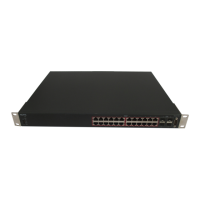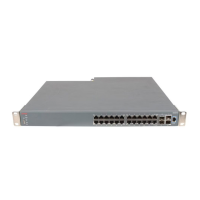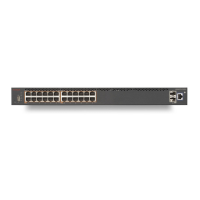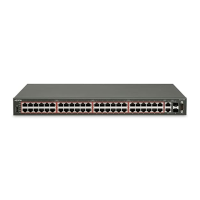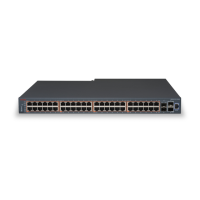The following is a series of failure scenarios and the description of the Stack Forced Mode
behavior. These scenarios assume the following stack setup:
Figure 1: Forced stack mode example setup
In the following scenario, the non-base unit, if functioning in Stack Forced Mode, keeps the
previous stack IP address. In this setup it is impossible to keep network connectivity without
administrator intervention. Clients connected to the non-base unit lose WAN connectivity.
Figure 2: Remote Branch Office - Failure Scenario 1
In the following scenario the non-base unit of a stack of two fails. The previous base unit, if
functioning in Stack Forced Mode, keeps the previous stack IP address, and preserves
connectivity to the network.
Figure 3: Remote Branch Office - Failure Scenario 2
In the following scenario, while functioning in Stack Forced Mode, both base and non-base
units keep using the previous stack IP address. The non-base unit is, however, isolated from
the rest of the network. Clients connected to this unit lose WAN connectivity.
Figure 4: Remote Branch Office – Failure Scenario 3
In the following scenario, the possible failures are identical to Remote Branch Office - Failure
Scenarios 1, 2, and 3.
Stack Forced Mode
Troubleshooting Avaya ERS 4000 Series April 2014 31

